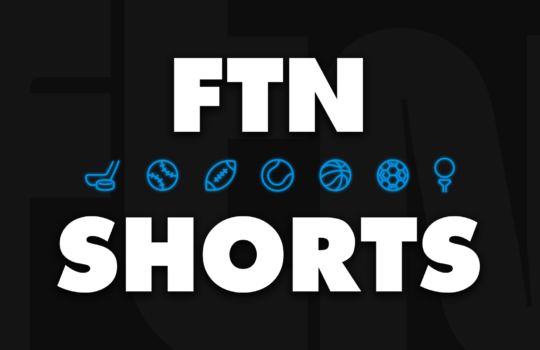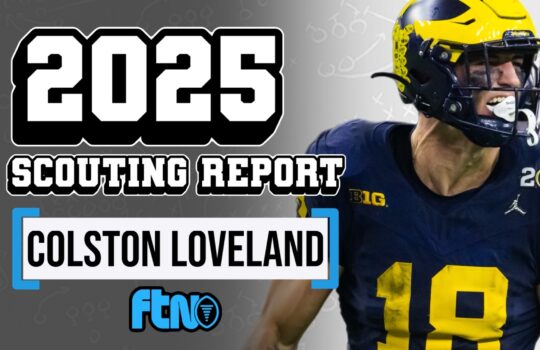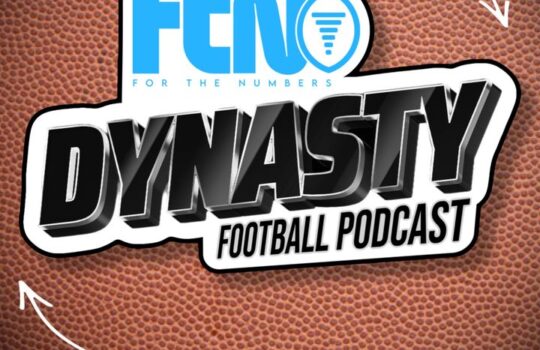
Statshub
FTN’s StatsHub
NFL Advanced Stats & Analytics Tool
StatsHub is FTN’s all-in-one NFL research tool, built for fantasy players, bettors, and analysts who want to go beyond the box score. Powered by FTN Data, StatsHub gives you access to the most detailed player and team-level data available anywhere — including proprietary metrics like DVOA, EPA per play, explosive run rate, and more.
Track every snap, filter by down, distance, coverage, play concept, or situation (e.g. under pressure, stacked box), and instantly compare players using dozens of sortable metrics.
What Makes StatsHub the Best NFL Stats Tool?
Unlike other football stats tools, StatsHub combines:
-
Charting data on every NFL play from FTN’s dedicated team of charters
-
Advanced filters by week, quarter, opponent, play type, or coverage
-
Custom views for offense, defense, and special teams
-
Metrics for fantasy, betting, and real football — all in one place
Want to see how often a WR faced press coverage? Or how a QB performed on deep throws when blitzed? StatsHub lets you dig that deep.
Built from FTN Data: Charted In-House on Every Play
Every stat in StatsHub comes directly from FTN’s in-house charting. Our team watches every game and logs every route, motion, coverage, and situation — no guessing, no outsourcing. This allows us to offer unique filters and metrics that can’t be found anywhere else, including:
-
Play concepts and player motion
-
Specific route types and defensive looks
-
Player participation and usage trends
How do I use StatsHub?
Check out our tutorial series here
Yes, DVOA is Included
StatsHub includes Aaron Schatz’s proprietary DVOA metric, offering unmatched insight into team and player efficiency. Whether you’re analyzing an offense’s performance against zone coverage or comparing running backs by explosive run rate, DVOA adds essential context that no other tool provides.
















































 New York Jets
New York Jets  New England Patriots
New England Patriots  Miami Dolphins
Miami Dolphins  Buffalo Bills
Buffalo Bills  Pittsburgh Steelers
Pittsburgh Steelers  Cleveland Browns
Cleveland Browns  Cincinnati Bengals
Cincinnati Bengals  Baltimore Ravens
Baltimore Ravens  Tennessee Titans
Tennessee Titans  Jacksonville Jaguars
Jacksonville Jaguars  Indianapolis Colts
Indianapolis Colts  Houston Texans
Houston Texans  Las Vegas Raiders
Las Vegas Raiders  Los Angeles Chargers
Los Angeles Chargers  Kansas City Chiefs
Kansas City Chiefs  Denver Broncos
Denver Broncos  Washington Commanders
Washington Commanders  Philadelphia Eagles
Philadelphia Eagles  New York Giants
New York Giants  Dallas Cowboys
Dallas Cowboys  Minnesota Vikings
Minnesota Vikings  Green Bay Packers
Green Bay Packers  Detroit Lions
Detroit Lions  Chicago Bears
Chicago Bears  Tampa Bay Buccaneers
Tampa Bay Buccaneers  New Orleans Saints
New Orleans Saints  Carolina Panthers
Carolina Panthers  Atlanta Falcons
Atlanta Falcons  San Francisco 49ers
San Francisco 49ers  Seattle Seahawks
Seattle Seahawks  Los Angeles Rams
Los Angeles Rams  Arizona Cardinals
Arizona Cardinals 










 Boston Celtics
Boston Celtics  Brooklyn Nets
Brooklyn Nets  Philadelphia 76ers
Philadelphia 76ers  New York Knicks
New York Knicks  Toronto Raptors
Toronto Raptors  Chicago Bulls
Chicago Bulls  Detroit Pistons
Detroit Pistons  Milwaukee Bucks
Milwaukee Bucks  Cleveland Cavaliers
Cleveland Cavaliers  Indiana Pacers
Indiana Pacers  Orlando Magic
Orlando Magic  Atlanta Hawks
Atlanta Hawks  Charlotte Hornets
Charlotte Hornets  Miami Heat
Miami Heat  Washington Wizards
Washington Wizards  Denver Nuggets
Denver Nuggets  Minnesota Timberwolves
Minnesota Timberwolves  Oklahoma City Thunder
Oklahoma City Thunder  Portland Trail Blazers
Portland Trail Blazers  Utah Jazz
Utah Jazz  LA Clippers
LA Clippers  Golden State Warriors
Golden State Warriors  Los Angeles Lakers
Los Angeles Lakers  Phoenix Suns
Phoenix Suns  Sacramento Kings
Sacramento Kings  Dallas Mavericks
Dallas Mavericks  Houston Rockets
Houston Rockets  Memphis Grizzlies
Memphis Grizzlies  New Orleans Pelicans
New Orleans Pelicans  San Antonio Spurs
San Antonio Spurs 








